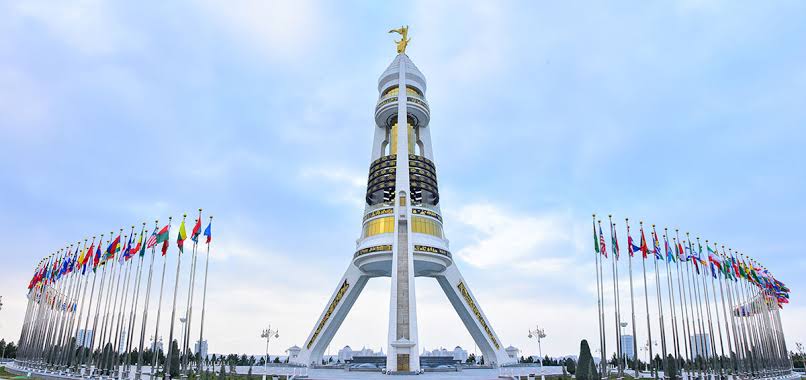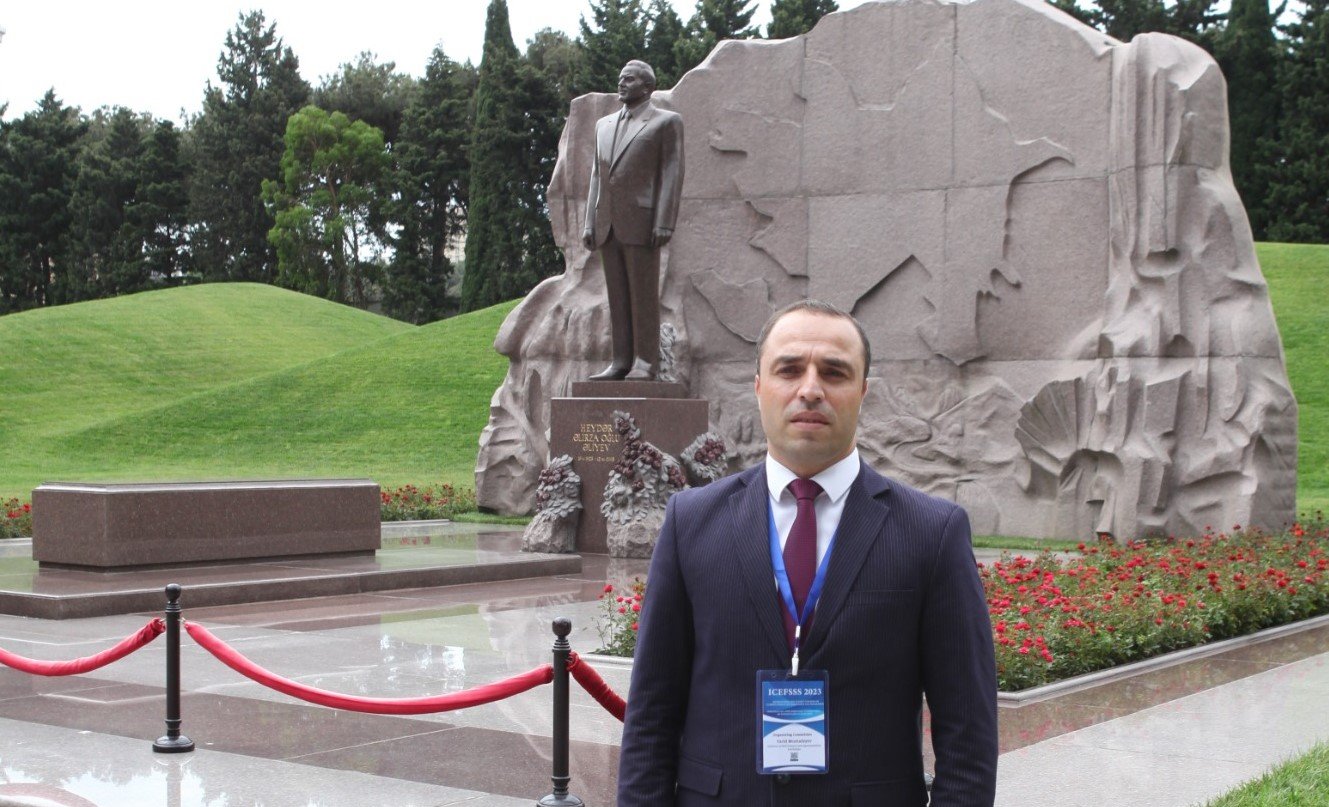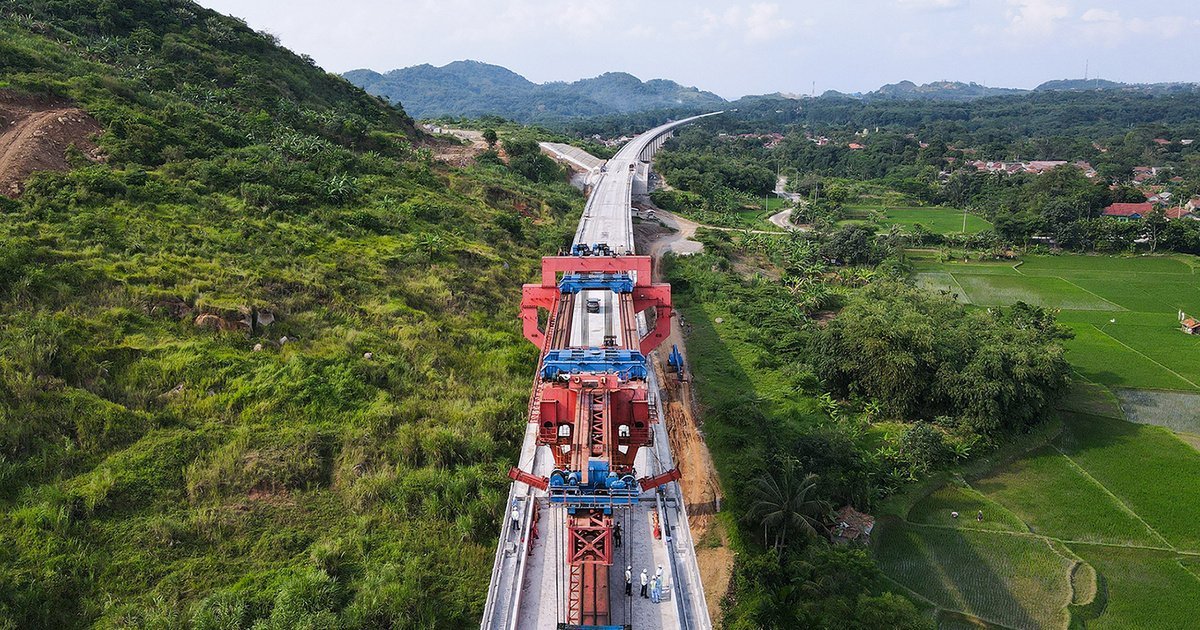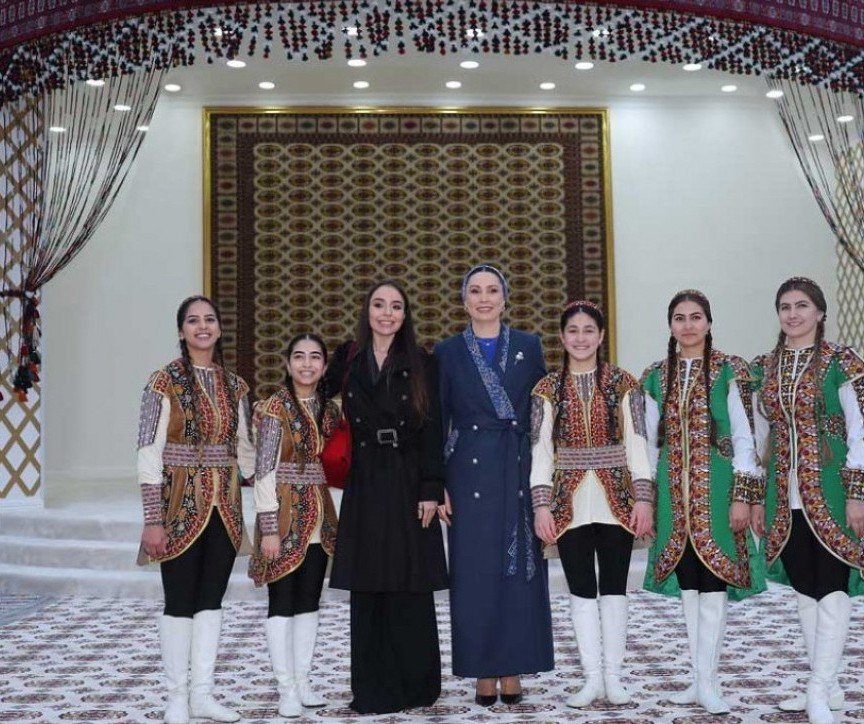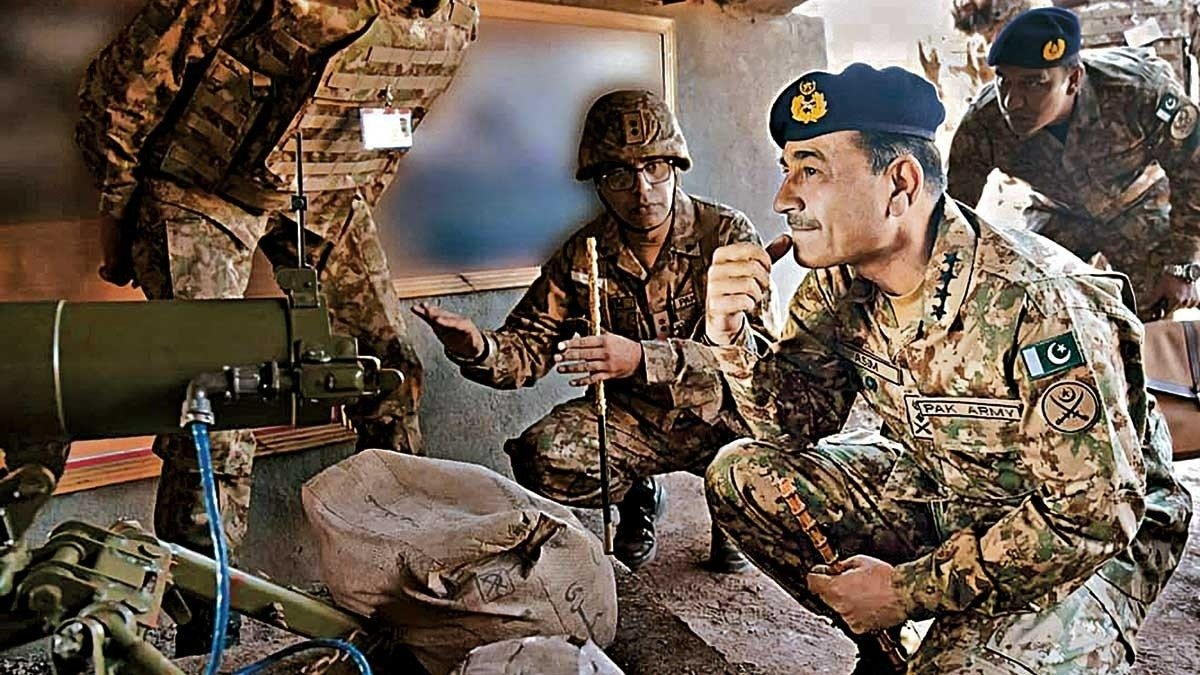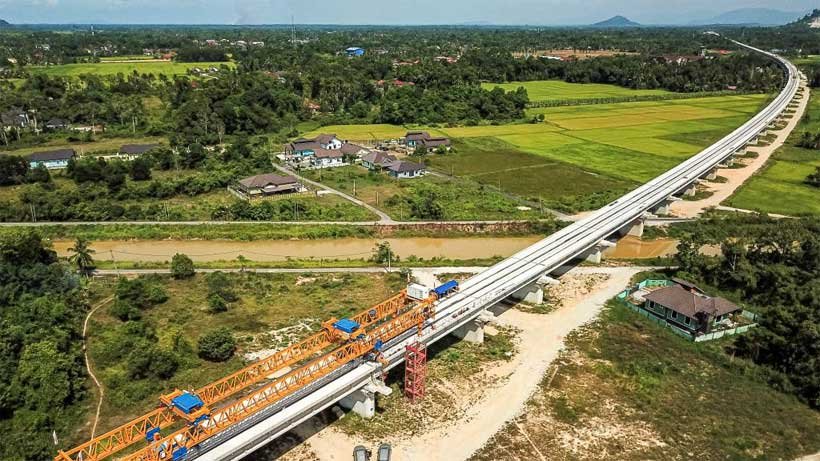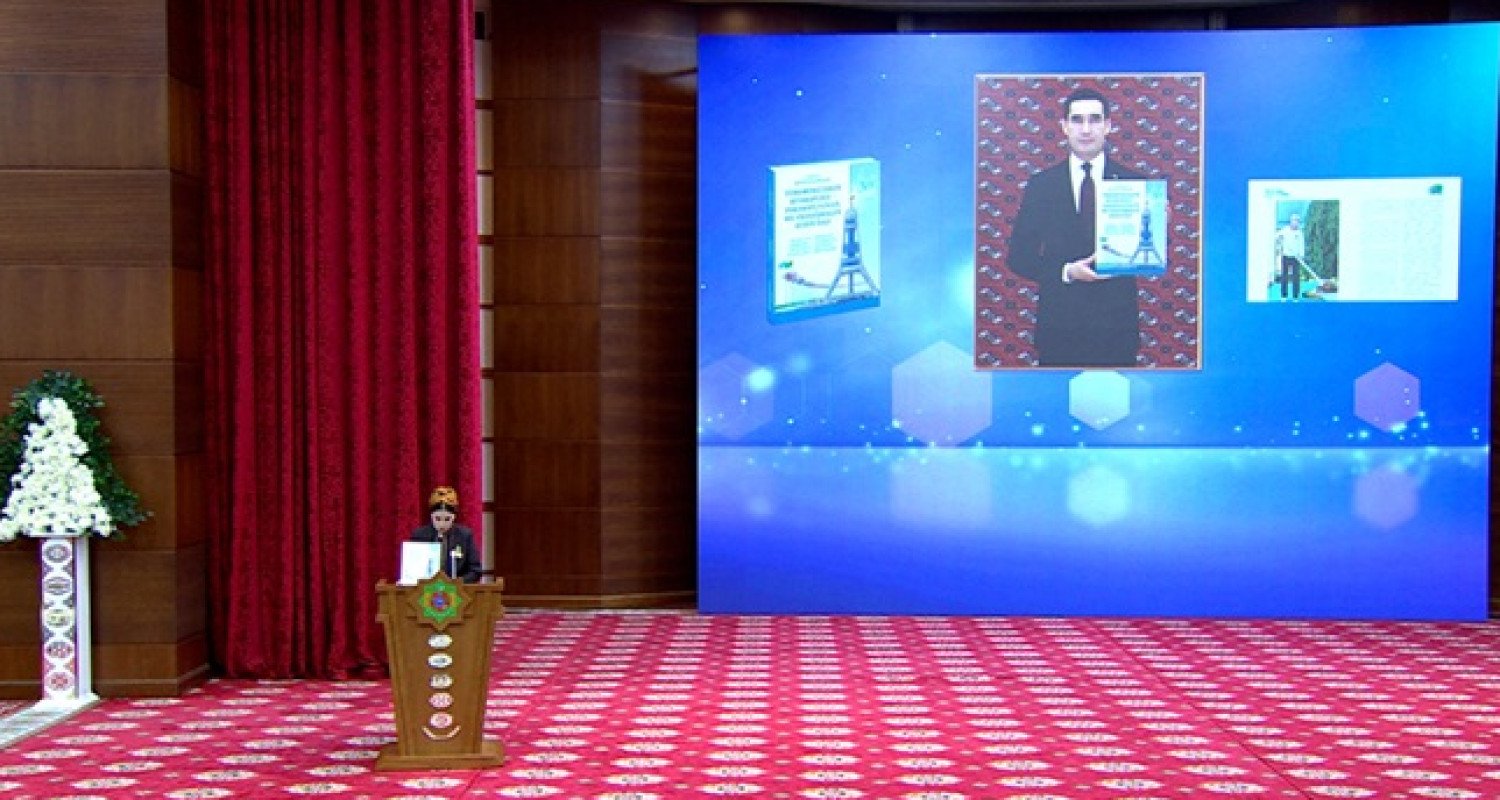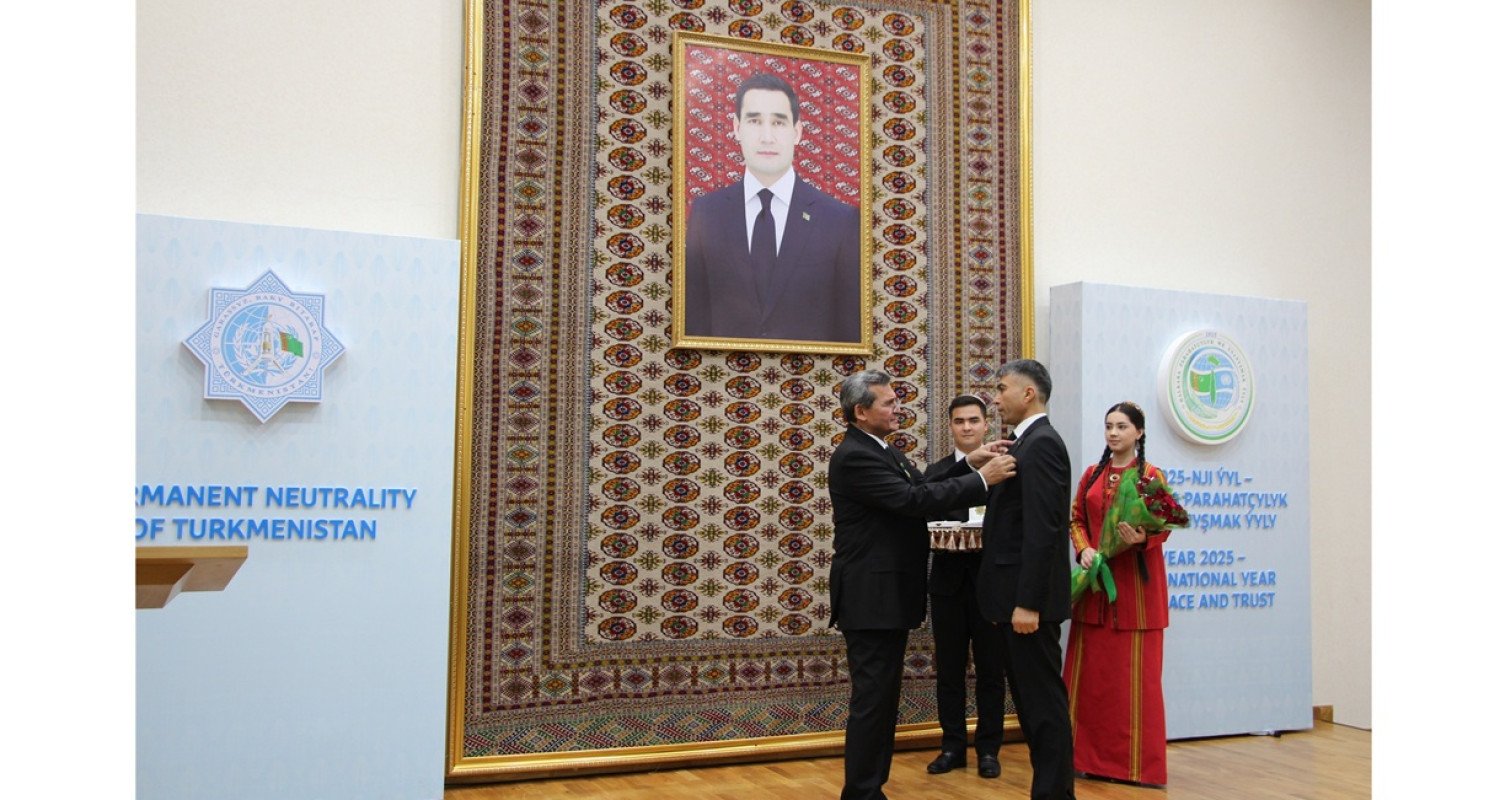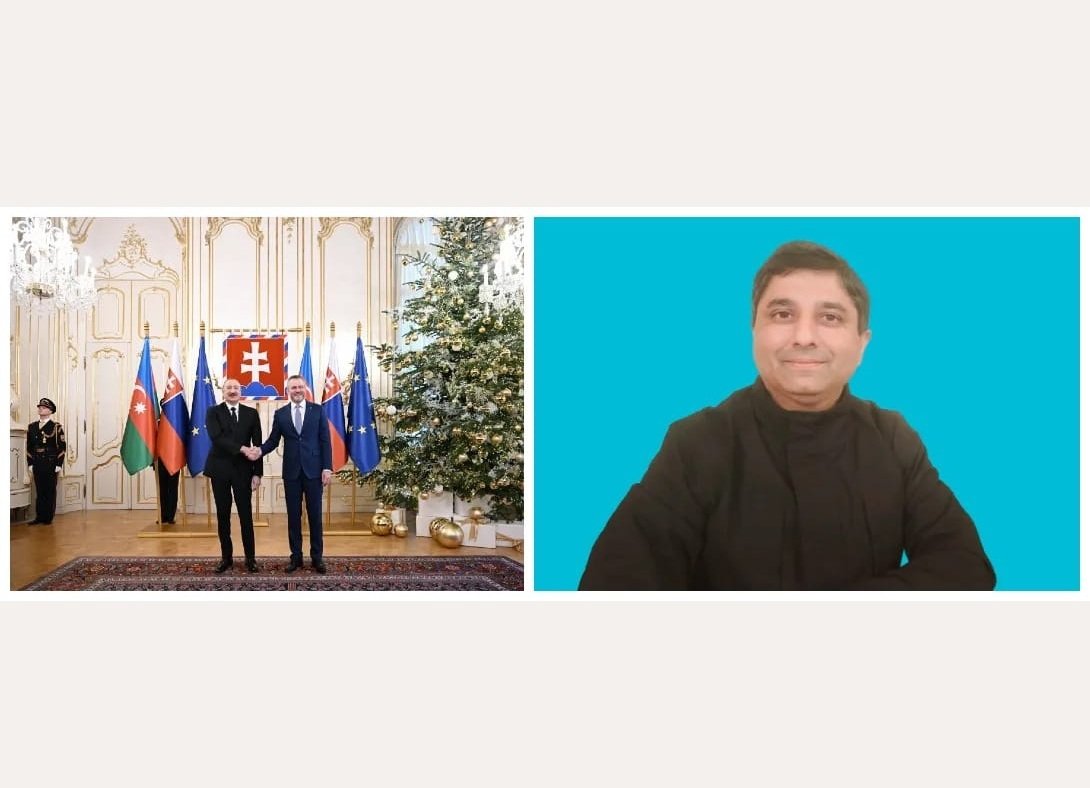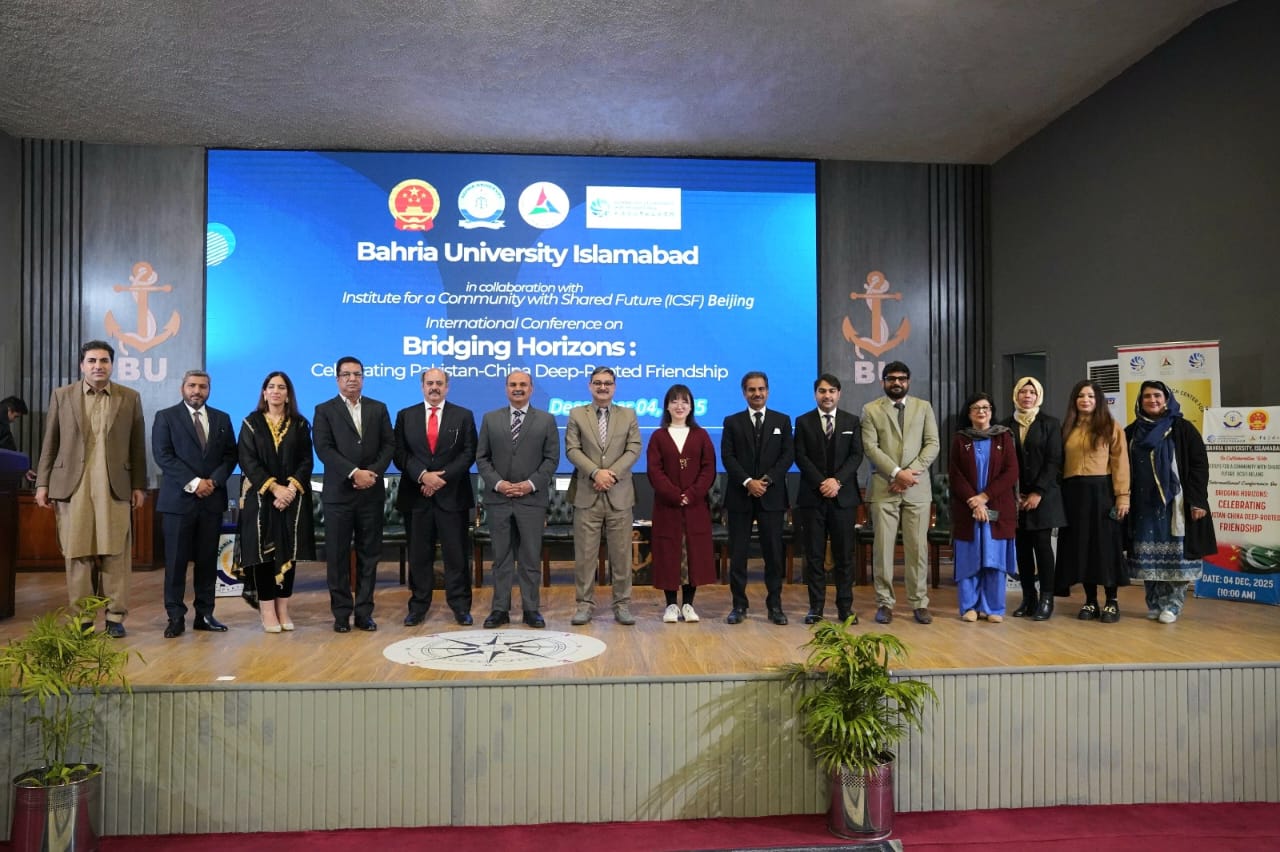1. LLDC3
From August 5 to 8, the coastal city of Awaza in Turkmenistan will host the Third United Nations Conference on Landlocked Developing Countries (LLDC3).
Several high-ranking officials are expected to attend, with Kazakh President Kassym-Jomart Tokayev having already arrived in Turkmenistan. Additionally, President Mirziyoyev, Kyrgyz delegations, Nepalese Prime Minister KP Sharma Oli is scheduled to visit the country from August 3 to 8, etc.
The four-day event will feature plenary sessions, five high-level roundtables, and a private sector forum focused on building partnerships and increasing investment. According to Belgium Times, the conference will center around five priority areas: structural transformation, infrastructure and connectivity, trade facilitation, regional integration, and resilience building—each supported by five flagship initiatives.
1.1. LLDC: What does it mean?
The reason the UN is addressing this issue is clear. Landlocked Developing Countries, which lack direct access to the sea, face significant challenges in trade, connectivity, and development. Without coastal ports, they depend on transit countries, resulting in higher trade costs and delays. According to the official UN page, over 570 million people live in these countries.
For LLDCs, geography has long dictated destiny. Trade costs can be up to 74% higher than the global average and transporting goods across borders can take twice as long as in coastal nations. As a result, LLDCs account for only 1.2% of global trade, according to The European Times.
“LLDC3 is a pivotal opportunity to reverse this trajectory,” said Rabab Fatima, the UN’s High Representative for the Least Developed Countries, Landlocked Developing Countries, and Small Island Developing States.
The Third UN Conference on LLDCs aims to explore solutions and forge partnerships to overcome these challenges and unlock the full potential of LLDCs for a more equitable and prosperous future.
In April 2025, the United Nations General Assembly unanimously adopted Resolution A/RES/79/279, officially designating Awaza as the host city for LLDC3.
1.2. LLDC3 in Turkmenistan
The United Nations is working closely with Turkmenistan, particularly in 2025, to promote peace and address the unique challenges faced by landlocked developing countries (LLDCs).
With its strategic location in Central Asia and long-standing policy of neutrality, Turkmenistan plays a pivotal role. Hosting LLDC3 is not merely symbolic—it reflects the country’s deep commitment to fostering dialogue, promoting sustainable connectivity, and transforming landlocked nations into land-linked economies.
“We are proud to host this event on the Caspian Sea coast in Turkmenistan,” said Aksoltan Ataeva, Turkmenistan’s Ambassador and Permanent Representative to the United Nations.
Awaza, a tourist hub on the Caspian Sea, attracts numerous visitors. The Turkmen government has invested heavily in its economic development, infrastructure, logistics, and hospitality sector—making it a fitting choice to host LLDC3.
Nearby Turkmenbashi, a major port city along the Middle Corridor, is also drawing attention from European delegations.
Turkmenistan continues to work on enhancing regional connectivity through several key infrastructure projects.
1.3. LLDC3’s program
Improving food security is among the top priorities of the Awaza Programme of Action.
The LLDC3 conference in Awaza unfolds through a rich and dynamic program designed to foster inclusive dialogue and strategic cooperation. It begins with the Parliamentary Forum, followed by the opening sessions of the Civil Society Forum and Youth Forum. These platforms continue throughout the event, alongside high-level engagements such as the UN Secretary-General’s meeting with UN principals (by invitation only). The official Opening Ceremony sets the tone for the Plenary Sessions and General Debates, complemented by press conferences and a series of side events. Five High-Level Round Tables address key thematic areas, while Ministerial Meetings on South–South Cooperation emphasize collaborative development. The Private Sector Forum and Connectivity Track highlight economic and infrastructure opportunities, and special sessions such as the Women Leaders’ Forum and the Youth Intergenerational Dialogue bring diverse voices to the forefront.
Turkmenistan is working to increase regional connectivity, including through the following projects:
– The Lapis Lazuli Corridor, inaugurated in 2018, connects Afghanistan, Turkmenistan, Azerbaijan, Georgia, and Türkiye. It reduces shipment times between Central and South Asia to Europe and is a model of regional cooperation between LLDCs and transit states.
– The Turkmenbashi International Seaport, on the Caspian Sea, was reconstructed and expanded at a cost of over $1.5 billion. It now serves as a vital multimodal logistics hub for landlocked countries in Central Asia, linking rail and road routes with maritime trade toward the Caucasus and Europe.
– Turkmenistan is a founding member of SPECA (Special Programme for the Economies of Central Asia), an UN-backed initiative focused on regional connectivity, trade facilitation, and transit harmonization.
– The country plays a leading role in the Central Asia–Middle East–South Asia transit vision, linking the Chabahar Port in Iran with roads and railways extending across Turkmenistan and further into Uzbekistan, Afghanistan, and beyond.
– These efforts reflect a consistent national strategy: to convert geographic remoteness into geopolitical advantage by becoming an essential transit node for surrounding countries. In doing so, Turkmenistan is also helping other LLDCs — particularly Afghanistan and Uzbekistan — to access global markets through shorter, more efficient trade routes.
This year, Turkmenistan is actively committed to enhancing global connectivity, promoting peace, and providing humanitarian aid. In line with its declaration of 2025 as the “Year of Peace and Trust,” the country has taken significant steps to support international cooperation and stability.
Among its humanitarian efforts, Turkmenistan is extending support to Palestine and offering aid to populations in need, including those in Iran. These actions reflect the country’s growing role in global affairs.
With its policy of permanent neutrality, Turkmenistan has become a model in international relations. This unique diplomatic stance allows the country to act as a bridge between nations, fostering dialogue and peaceful collaboration.
To better understand Turkmenistan’s approach, it is essential to explore the foundations of its policy of permanent neutrality.
2. The Role of Permanent Neutrality in Turkmenistan’s Foreign Policy
This year, Turkmenistan is celebrating thirty years of permanent neutrality. Since its independence, the concept of neutrality has promoted Turkmenistan’s interests at the national, regional, and global levels. Moreover, during the 78th session of the United Nations General Assembly, the resolution “2025 – International Year of Peace and Trust” was adopted at Turkmenistan’s initiative.
2.1. The Concept of Turkmen Permanent Neutrality
2.1.1. Turkmenistan’s Commitment to Permanent Neutrality
Turkmenistan’s Constitutional Law on Permanent Neutrality came into force in 1995. This unique status aims to keep the country out of conflicts while promoting peace and international cooperation.
After stabilizing the country’s internal situation, Turkmen leaders pursued a proactive foreign policy. Turkmenistan’s permanent neutrality policy is characterized by the following principles: maintaining the sovereignty and territorial integrity of all states, non-interference in the internal affairs of other states, avoiding the use of force in interstate conflicts, recognizing the role of the United Nations in maintaining global peace, promoting cooperation in various sectors, and refraining from joining any military or political alliances.
2.2. Permanent Neutrality of Turkmenistan in the Service of Diplomacy
2.2.1. Turkmenistan’s Diplomatic Policy
Through its diplomatic policy, Turkmenistan seeks to emphasize that neutrality does not mean isolation but rather a positive, active, and supportive contribution to regional and international affairs. According to Matyakobov (2019) [4] and Boryyev (2024) [3], with the accession of the second president, G. Berdimuhamedov, Turkmenistan shaped its foreign policy in line with the innovations introduced by its neutrality, allowing the country to open up to the world. It has become a point of interest for foreign investors.
Turkmenistan has signed bilateral agreements and cooperated with many countries in various sectors, such as energy. Bilateral and multilateral agreements in the transport sector aim to improve connectivity between regional countries and establish a transport network. In this context, the Kazakhstan-Turkmenistan-Iran railway and the Turkmenistan-Afghanistan-Tajikistan railway are significant initiatives for the North-South transport corridor project [5].
President Serdar Berdimuhamedov came to power in 2022 with the support of the majority of the population. Since taking office, he has continued Turkmenistan’s neutrality policy, shaping a new order that preserves the country’s stability in international relations. The President of Turkmenistan has adopted and approved the “Foreign Policy Concept of Neutral Turkmenistan for 2022-2028” [6].
This has allowed Turkmenistan to be accepted by the international community. It has established bilateral relations with the United States, Russia, Iran, Afghanistan, Uzbekistan, Türkiye, Europe, China, India, Pakistan, and many others. The maintenance of the neutrality policy has been reinforced by Turkmenistan’s internal stability, economic and infrastructure development, adherence to international law and treaties, commitment to nuclear non-proliferation, decision not to produce or stockpile biological and chemical weapons, and the prohibition of any foreign military presence on its territory.
Finally, the status of permanent neutrality has enabled Turkmenistan to cooperate in resolving issues related to the Caspian Sea. The first Caspian Economic Forum was held on August 14, 2019, at the initiative and under the patronage of Berdimuhamedov. The forum, organized to strengthen economic cooperation among Caspian littoral states, focused on trade, industry, and transport, particularly in the energy sector [7].
Furthermore, Turkmenistan has sought to enhance diplomacy through various topics, including women’s rights. In this context, the Dialogue of Central Asian Women, established in December 2020 at the initiative of the National Leader of the Turkmen People, Gurbanguly Berdimuhamedow, is the first structure in Central Asian history created by representatives of Kazakhstan, Kyrgyzstan, Tajikistan, Turkmenistan, and Uzbekistan with the support of the United Nations, according to interviews given by diplomat M. Rahymova (February 6, 2025) [8].
2.2. Permanent Neutrality in the Service of Global Peace
Turkmenistan’s permanent neutrality serves global peace. The United Nations has emphasized that the country played a mediating role during the Tajik Civil War. Similarly, Turkmenistan actively assisted the UN in its efforts to establish peace in Afghanistan, hosting several meetings between Afghan parties [9].
On May 16, 2023, in Ashgabat, the Turkmenistan Assembly, in cooperation with the OSCE Parliamentary Assembly, organized an international conference titled “Role of Neutral States in Strengthening Security, Stability, and Dialogue in the OSCE Area.” [10]
Finally, researchers emphasize that climate change could create conflicts [11]. To promote peace, the Turkmen government proposes intensifying a global cooperation strategy to support the Sustainable Development Goals. According to the official website of the Turkmen Ministry of Foreign Affairs, during the International Year of Peace and Trust, Turkmenistan will focus on “green diplomacy” [12].
Conclusion
The policy of neutrality enables Turkmenistan to achieve its political objectives on three levels: national, regional and international. Turkmenistan has begun to develop at national level, overcoming domestic challenges only thanks to its policy of neutrality, which is helping it to focus on domestic restructuring and to put its house in order. Political, economic and cultural reforms have been introduced to ensure domestic stability.
The literature shows that Turkmenistan’s policy of permanent neutrality has had an impact on its foreign policy and has enabled it to cooperate with the United Nations according to the following principles: Working for the environment; working on energy security and a sustainable energy system; collaborating with the United Nations to set up a transport system and corridors; developing its relations with regional and international organizations…
Ultimately, Turkmenistan’s 30 years of neutrality serve as a unique model for small and medium-sized states seeking to navigate international politics without compromising their sovereignty and stability. By continuing to embrace peaceful diplomacy, strategic cooperation, and multilateral engagement, Turkmenistan will reinforce its role as a neutral, stable, and reliable partner in the international community. Furthermore, the choice of Turkmenistan as the organizer of the international forum, like LLDC3, confirms the recognition of its role in regional and international politics, as well as its commitment to sustainable development.
Sources:
[1] Ministry of Foreign Affairs of Turkmenistan. (s. d.). At the meeting of the 78th session of the UN General Assembly, on the initiative of Turkmenistan, the resolution “2025 – International Year of Peace and Trust” was adopted. Récupéré de https://www.mfa.gov.tm/en/news/4437 .
[2] Bonjour, E. (1948). Swiss Neutrality: Its History And Meaning (Great Britain). Allen & Unwin.
[3] Boryyev, A. (2024). Uluslararası Siyaset Açısından Daimî Tarafsızlık İlkesinin Bölgesel Barış Ve İstikrarın Sağlanmasındaki Rolü: Türkmenistan Örneği (Master’s thesis, Kırşehir Ahi Evran Üniversitesi-Sosyal Bilimler Enstitüsü).
[4] Matyakubov, H. (2019). Bağımsızlık Sonrası Dönemde Türkmenistan’da Milliyetçilik Politikaları (Samsun). 6.
[5] Birdişli, F. (2011). Türkmenistan’ın Uluslararası İlişkileri, Savunma ve Güvenlik Politikası. Age, 325.
[6].(Türkmenistanyň Prezidenti Serdar Berdimuhamedowyň Ministrler Kabinetiniň giňişleýin mejlisindäki çykyşy, 2022)
[7]. Hamzaoğlu, H. (2020). GÜNCEL ULUSLARARASI GELİŞMELER IŞIĞINDA TÜRKMENİSTAN DIŞ POLİTİKASI.
[8]. Rahymova, M. (2025, 6 février). Turkmen diplomat highlights Turkmenistan’s commitment to global peace in Kanal Avrupa TV channel interview. EU Reporter. https://www.eureporter.co/world/turkmenistan/2025/02/06/turkmen-diplomat-highlights-turkmenistans-commitment-to-global-peace-in-kanal-avrupa-tv-channel-interview/
[9]. Anceschi, L. (2008). Turkmenistan’s foreign policy: Positive neutrality and the consolidation of the Turkmen regime. Routledge.
[10] OSCE Parliamentary Assembly. (2023, February 23). Turkmenistan conference considers the role of neutral states in strengthening security. OSCE PA. https://www.oscepa.org/en/news-a-media/press-releases/press-2023/turkmenistan-conference-considers-the-role-of-neutral-states-in-strengthening-security
[11]Koubi, V. (2019). Climate change and conflict. Annual review of political science, 22(1), 343-360.
[12] Ministry of Foreign Affairs of Turkmenistan. (s. d.). Concept of the activities and priorities of Turkmenistan within the framework of the International Year of Peace and Trust. Récupéré de https://www.mfa.gov.tm/en/news/5025.
Extra – BIBLIOGRAPHY
1. Birdişli, F. (2011). Türkmenistan’ın Uluslararası İlişkileri, Savunma ve Güvenlik Politikası. Age, 325.
2. Bonjour, E. (1948). Swiss Neutrality: Its History And Meaning (Great Britain). Allen & Unwin.
3. Boryyev, A. (2024). Uluslararası Siyaset Açısından Daimî Tarafsızlık İlkesinin Bölgesel Barış Ve İstikrarın Sağlanmasındaki Rolü: Türkmenistan Örneği (Master’s thesis, Kırşehir Ahi Evran Üniversitesi-Sosyal Bilimler Enstitüsü).
4. Erol, M. S., & Başaran, D. (2021). Afgan Sorunu Bağlamında Şanghay İşbirliği Örgütü’nün Ortadoğu Açılımı. Bölgesel Araştırmalar Dergisi, 5(2), 402-432.
5. Gärtner, H. (2018). Austria: engaged neutrality. The European Neutrals and NATO: Non-alignment, Partnership, Membership?, 129-149.
6. Hamzaoğlu, H. (2020). GÜNCEL ULUSLARARASI GELİŞMELER IŞIĞINDA TÜRKMENİSTAN DIŞ POLİTİKASI.
7. Matyakubov, H. (2019). Bağımsızlık Sonrası Dönemde Türkmenistan’da Milliyetçilik Politikaları (Samsun). 6.
8. Ministry of Foreign Affairs of Turkmenistan. (s. d.). Concept of the activities and priorities of Turkmenistan within the framework of the International Year of Peace and Trust. Récupéré de https://www.mfa.gov.tm/en/news/5025.
9. OSCE Parliamentary Assembly. (2023, February 23). Turkmenistan conference considers the role of neutral states in strengthening security. OSCE PA. https://www.oscepa.org/en/news-a-media/press-releases/press-2023/turkmenistan-conference-considers-the-role-of-neutral-states-in-strengthening-security
10. Rahymova, M. (2025, 6 février). Turkmen diplomat highlights Turkmenistan’s commitment to global peace in Kanal Avrupa TV channel interview. EU Reporter. https://www.eureporter.co/world/turkmenistan/2025/02/06/turkmen-diplomat-highlights-turkmenistans-commitment-to-global-peace-in-kanal-avrupa-tv-channel-interview/
11. Rising Nepal. (n.d.). Titre de l’article. Rising Nepal. https://risingnepaldaily.com/news/66035
Schmid and Langbein, (2004). “Turkmenistan: Nation Building and Economic Development Since Independence”.
12. (Türkmenistanyň Prezidenti Serdar Berdimuhamedowyň Ministrler
Kabinetiniň giňişleýin mejlisindäki çykyşy, 2022).
13. The European Times. (2025, 2 août). Une fois par décennie : les dirigeants mondiaux ont fait pression pour que les négociations soient conclues en vue de la conférence historique des Nations Unies au Turkménistan. The European Times. https://www.europeantimes.news/fr/2025/08/Une-fois-par-d%C3%A9cennie–les-dirigeants-mondiaux-ont-fait-pression-pour-que-les-n%C3%A9gociations-soient-conclues-en-vue-de-la-conf%C3%A9rence-historique-des-Nations-Unies-au-Turkm%C3%A9nistan/
14. United Nations General Assembly. (1995). Permanent Neutral State status was granted to Turkmenistan by the United Nations General Assembly on December 12, 1995, by resolution A/RES/50/80. https://www.un.org/
15. Ünlü, İ. H. (2016). TÜRKMENİSTAN’IN TARAFSIZLIK POLİTİKASININ BÖLGESEL GERÇEKLİĞİ. Çeşm-i Cihan: Tarih Kültür ve Sanat Araştırmaları Dergisi E-Dergisi, 3(1), 95-102.
Third UN Conference on Landlocked Developing Countries | United Nations

Ms. Derya Soysal is historian and environmental management expert on Central Asia and researcher on Central Asia post-Soviet period. Journalist for EuReporter and EuReflect.
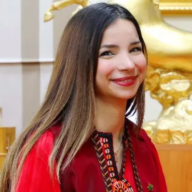
Historian and environmental management expert on Central Asia and researcher on Central Asia post-Soviet period. Journalist for EuReporter and EuReflect and Special Director of “The Gulf Observer” for Europe and Central Asia.
